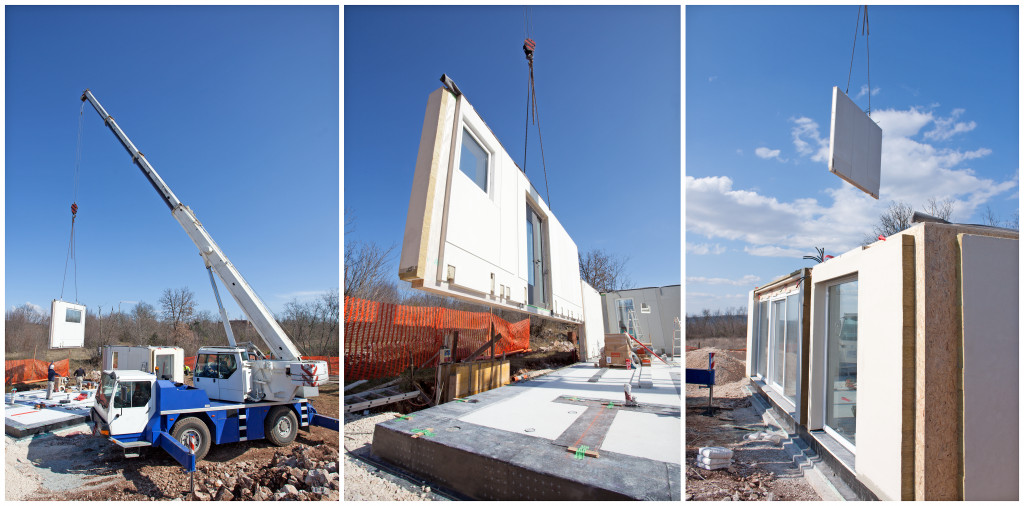In the past, there’s a stigma with modular or prefabricated homes. They are faster to build than traditional homes. They also have relatively lower prices. And because of these factors, prefabricated homes are associated with poor construction and weak structure.
Thankfully, the reputation of prefabricated homes has become better in recent years. These homes are a great option for people who are looking for a low-cost home. Modular homes are also associated with a greener approach to living. Even Elon Musk is now living in a prefabricated home in Texas.
The popularity of modular homes continues to rise. But realistically, is it really good to live in one?
Advantages of a Prefab Home
You may hesitate to invest in a prefab home due to unfamiliarity. But there are several compelling reasons to consider living in one in the near future:
Lower Electric Bill
Modern prefab homes can be self-sufficient, thus limiting their need for energy. For example, most modern modular homes come with solar panels. These homes also have energy-efficient electric fixtures, such as LED bulbs instead of fluorescent bulbs.
Compared to traditional homes, prefab homes are also more effectively insulated. As a result, they need less power to heat up during the cold months and are cooler during the hot months.
With the use of an alternative energy source, energy-efficient fixtures, and tight insulation, you can expect to pay less on your electric bills if you live in a prefab home.
Lower Water Bill
Aside from saving electricity, you’ll also save water with a modular home. The key is in its design. Areas that need water, such as a kitchen and a bathroom, are grouped together. Because these areas are right next to each other, there’s a lower chance of heat loss. And as mentioned earlier, prefab homes are insulated well, which also helps in reducing heat loss.
Durable
Modular homes are quite durable, which is contrary to popular belief that prefab homes are weak. When building the structure of a prefab home, all the materials are fitted well together and are properly secured. Also, just like with a traditional home, the construction of a prefab home is monitored by engineers and contractors.
In terms of calamity-proofing, some modern modular homes are specifically designed to be “stormproof.” Realistically, every building or foundation is not exempt from the wrath of a storm or a hurricane. But prefab homes can do well on their own, just like on-site homes. In a 1992 report by the Federal Emergency Management Agency, Hurricane Andrew inflicted less damage on modular buildings compared to nearby traditional homes.

Disadvantages of a Prefab Home
Despite the many advantages of prefab homes, you also need to consider some of its cons:
Less Customizable
A modular home can be customized in that the owner can choose how they want its layout to be, its color, etc. But after the home has been constructed, it’s not very customization-friendly compared to a traditional home.
For example, if you live in an on-site home and decide you want to install an air conditioning unit in one of your rooms, you can just call a technician with an HVAC certification or license or a local contractor to help you do the job. Modular homes don’t have this kind of flexibility.
Expensive Upfront Cost
When you buy a pre-owned home, you can settle the payment via a bank and only pay a small percentage as a downpayment. After that, you get to move to your new home. The same can’t be said with prefab homes.
You need to settle your payments before you can move to your modular home. Sure, you can opt to apply for financing to settle the upfront cost. But it’s not that easy as compared to buying a traditional home.
Additional Cost on Hooking Up Utilities
When you build a traditional home, the total cost already includes arranging your utilities, such as building your sewage system and connecting it to the nearby water resource, electrical connections, and so on. Unfortunately for prefab homes, these are not always included in the overall cost. You’ll have to talk to the contractor to arrange these things for you. But this means you’ll have to put in more money, which circles back to the disadvantage pointed out earlier.
Even with the additional costs, the total contract price of a modular home will still be significantly lower than a traditional home. The lower cost, durability, and efficiency of a prefab home show that it can be a worthy investment.

